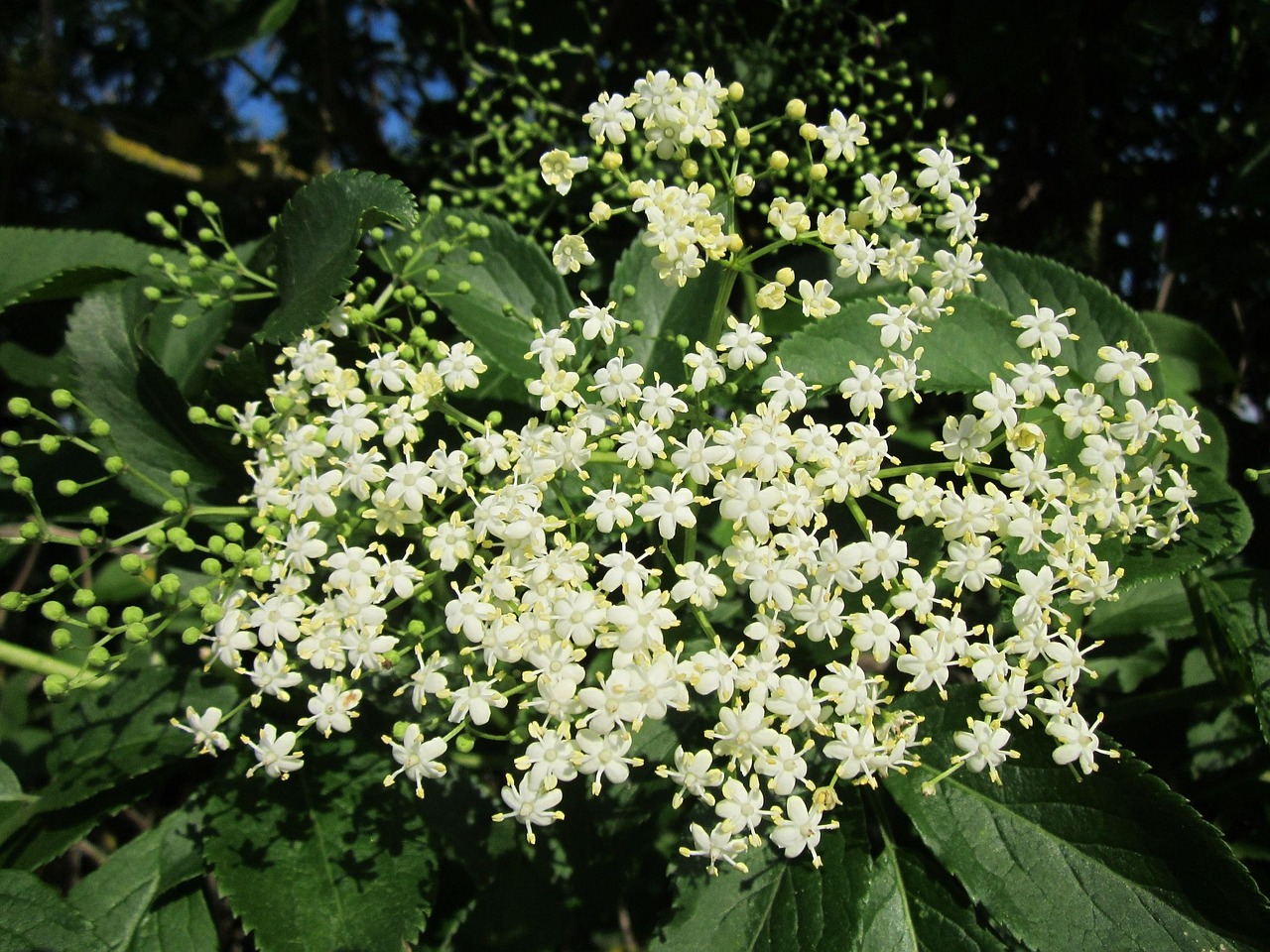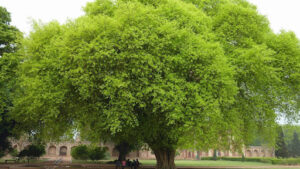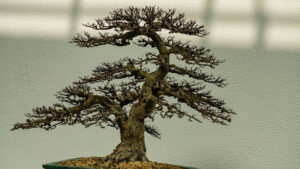How Fast Do Box Elder Trees Grow? Growth Rate & Care Tips

- October 8, 2025
- By Jason Sinclair
When I first started looking into Box Elder trees, I was curious about their growth speed, and I always thought about how fast box elder trees grow. It’s a common question for anyone considering planting one, whether for shade, privacy, or just to fill a space quickly. Box Elders are known for being pretty fast growers, which is a big part of their appeal. They aren’t the slowest trees out there, that’s for sure.
Understanding How Fast Do Box Elder Trees Grow?
Generally, you can expect a Box Elder to add about 2 feet or more to its height each year, especially when it’s young and in good condition. This rapid growth means you’ll see a noticeable difference in just a few seasons. It’s not like waiting decades for a mature oak to really make its presence known; Box Elders get going pretty quickly.
Several things can affect just how fast this happens, though. It’s not just a simple number that applies to every single tree everywhere. Things like the soil it’s planted in, how much water it gets, and even the local climate play a big role. I’ve found that understanding these influences helps set realistic expectations.
It’s important to remember that while fast growth is a benefit, it can also come with its own set of challenges, like weaker wood. So, it’s a bit of a trade-off.
Here’s a quick look at what influences their speed:
- Soil Quality: Rich, well-drained soil is always better for any plant.
- Water Availability: Consistent moisture, especially when young, is key.
- Sunlight Exposure: These trees really do best with plenty of sun.
- Climate: They are quite hardy, but extreme conditions can slow them down.
For instance, a Box Elder planted in a spot with poor, compacted soil and little water will likely not grow as quickly as one in a fertile, moist location. It’s similar to how other plants respond; they do better when their basic needs are met. If you’re looking for a tree that establishes itself without a long wait, the Box Elder is definitely worth considering, especially if you can provide it with a decent spot. For comparison, white ash trees, another type of tree, also grow at a moderate to fast pace, adding up to 2 feet annually in their early years under good conditions, similar to the Box Elder. You can find more about white ash trees if you’re curious about other fast-growing options.
How Fast Do Box Elder Trees Grow Each Year
When I look at a Box Elder tree, I’m always struck by how quickly it seems to shoot up. It’s not exactly a slowpoke. In fact, under good conditions, you can expect a Box Elder to add anywhere from 1 to 2 feet to its height annually. That’s a decent clip, especially when you’re looking for some quick shade or want to fill out a space in your yard without waiting forever.
It’s important to remember that this is an average, though. Several things can nudge that growth rate up or down. Think of it like this:
- Sunlight: These trees do best with plenty of sun. If it’s constantly shaded, it’s going to take longer to reach its potential height.
- Water: While they can handle a bit of dryness once they’re established, consistent moisture, especially when they’re young, makes a big difference.
- Soil Quality: They’re not super picky, but if the soil is decent and drains well, the tree will have an easier time getting the nutrients it needs to grow.
So, while you might see a foot of growth in a less-than-ideal spot, you could easily get that 2-foot mark or even a bit more if everything aligns perfectly. It’s a tree that rewards you with its speed.
It’s fascinating how a tree can grow so fast, but it’s also a reminder that rapid growth sometimes comes with trade-offs, like wood that’s not as strong as slower-growing trees.
For those interested in the specifics, here’s a general idea of what you might observe:
| Age (Years) | Average Height Increase (per year) |
| 1-3 | 1.5 – 2 feet |
| 4-10 | 1 – 1.5 feet |
| 10+ | 0.5 – 1 foot |
This shows that while they start with a bang, the growth rate naturally slows down a bit as the tree matures. It’s still a fast grower compared to many other trees, but it’s good to have realistic expectations. If you’re looking to get a jump start on your landscaping, the Box Elder is definitely a contender for its rapid development, and you can find more information on growing these trees.
Factors That Influence How Fast Do Box Elder Trees Grow

When I’m looking at how quickly a Box Elder tree might shoot up, I’ve noticed a few things that really make a difference. It’s not just about planting it and forgetting about it; there are definitely some key elements at play.
The amount of sunlight the tree gets is probably the biggest factor I’ve seen. While Box Elders aren’t super picky and can handle some shade, they really take off when they’re in full sun. Think of it like us – we do better when we get enough light, right? The same goes for these trees.
Here’s a quick rundown of what I consider:
- Sunlight: Full sun is best for maximum growth. Partial shade is okay, but expect a slower pace.
- Water: They like consistent moisture, especially when they’re young. Once they’re established, they can handle a bit of dryness, but regular watering during dry spells helps them keep growing strong.
- Soil Quality: Box Elders are pretty adaptable and will grow in a variety of soils, from sandy to clay. However, they do best in soil that drains well but still holds some moisture. If the soil is really poor, growth might be slower.
- Nutrients: While they don’t need a lot of fuss, a little balanced fertilizer in the spring can give them a boost, especially if your soil isn’t very rich. I usually do this early in the growing season.
- Space: Giving them enough room to spread out is important. Planting them too close together can lead to competition for resources, which naturally slows down growth for all the trees involved.
It’s interesting how adaptable these trees are. I’ve seen them pop up in all sorts of places, even in disturbed ground or along riverbanks where you might not expect much to grow. This resilience means they can often overcome less-than-ideal conditions, but to get that really fast growth we’re talking about, you’ll want to give them the best environment you can.
When I’m trying to get a tree to grow quickly, I always think about giving it the best possible start. For Box Elders, this means finding a spot that gets plenty of sun and making sure the soil isn’t completely waterlogged or bone dry. It’s a bit like getting a Bald Cypress to thrive; location and consistent care really matter for their development.
Soil and Water Needs: Supporting Faster Growth
When I’m trying to get a tree to grow quickly, I always pay close attention to its soil and water. For box elders, this means understanding they’re pretty adaptable, but giving them what they prefer really makes a difference. They don’t need fancy soil; they’ll manage in clay, loam, or even sandy stuff. What’s more important is that the soil can hold some moisture but also drain well. Soggy roots are a big no-no for these trees.
Young box elders, especially in their first year, are thirsty. I make sure to water them regularly, aiming to keep the soil consistently moist but not like a swamp. A good rule of thumb is about 1 to 2 inches of water each week. This helps them build a strong root system, which is key for future growth. Once they’re established, they’re much tougher and can handle dry spells better, though a deep watering now and then during a long dry spell is still a good idea.
Overwatering is a common mistake that can lead to root rot, a problem that really stunts a tree’s growth and can even kill it. It’s better to water deeply and less often than to keep the soil constantly saturated.
Here’s a quick rundown of what I look for:
- Soil Type: Adaptable to most types, but prefers moist, well-drained conditions.
- Watering Young Trees: Aim for consistent moisture, about 1-2 inches per week.
- Watering Mature Trees: Drought-tolerant, but benefits from occasional deep watering.
- Drainage: Avoid areas where water sits for long periods.
Getting the watering right is a big part of helping your box elder reach its potential. If you’re unsure about your soil’s drainage, you can always do a simple test: dig a hole about a foot deep and fill it with water. If the water drains away within a few hours, you’re likely good to go. If it stays pooled, you might need to amend the soil or choose a different spot. Proper watering is a simple yet effective way to support faster growth, and you can find more details on watering young trees to get started.
How Fast do Box Elder Trees Grow in Proper Sunlight and Climate

When I’m thinking about how fast a box elder tree will grow, I always consider the light and the weather. These trees are pretty adaptable, but they do their best when they get plenty of sunshine. Full sun is ideal for the fastest growth, though they can manage in spots that get a bit of shade during the day.
Box elders are tough cookies when it comes to climate. They’re hardy in USDA zones 3 through 9, which means they can handle some seriously cold winters and pretty hot summers. This wide range of tolerance is one reason they’re found all over the place.
Here’s a quick look at how different conditions can affect them:
- Full Sun: This is where you’ll see the most vigorous growth. The tree gets all the energy it needs to grow in height and spread.
- Partial Shade: Growth will likely be a bit slower compared to full sun, but the tree will still be healthy.
- Extreme Cold: They’re built for it, so winter isn’t usually a growth-limiting factor.
- Extreme Heat: While they can tolerate heat, prolonged, intense heat waves without enough water might slow them down a bit.
It’s interesting how a tree that can grow so quickly in good conditions can also survive in less-than-ideal spots. This resilience is a big part of why they’re so common.
So, if you’re aiming for a fast-growing box elder, make sure it’s planted in a spot that gets at least six hours of direct sunlight each day. The climate itself is usually not the main bottleneck for this species, but the amount of light certainly plays a big role in how quickly it reaches its potential.
How Fast Do Box Elder Trees Grow in Urban vs. Rural Areas
When I look at how Box Elder trees perform in different settings, it’s pretty interesting to see the differences between city life and out in the country. Generally, these trees are known for being tough and growing pretty quickly, no matter where they are. But the environment really does play a role.
In urban areas, Box Elders often have to deal with a lot more. Think about compacted soil, less space for roots to spread out, and sometimes, less consistent watering. Despite these challenges, they can still grow at a decent pace, often around 1 to 2 feet per year. This is because they’re really good at adapting to tough conditions. The publication “Spontaneous Urban Vegetation” mentions how urban habitats, with their packed soil and heat, change what can grow there, and Box Elders are often among the survivors. They can handle pollution and a bit of neglect better than some other trees.
Out in rural areas, especially where there’s more open space and natural moisture like along riverbanks, Box Elders can really take off. If they’re in good soil with plenty of sun and water, I’ve seen them grow even faster, sometimes exceeding 2 feet a year. They have more room to spread their roots and aren’t competing as much with buildings or pavement. It’s like they get a bit of a head start when they have natural conditions on their side.
Here’s a quick look at what I’ve observed:
- Urban Settings:
- Growth rate: 1-2 feet per year.
- Challenges: Compacted soil, limited root space, potential pollution.
- Benefits: Often planted for quick shade, it can tolerate urban stress.
- Rural Settings (Optimal Conditions):
- Growth rate: 1.5-2+ feet per year.
- Benefits: More space, natural moisture, less competition.
- Drawbacks: Can be seen as weedy if not managed.
It seems that while Box Elders are naturally fast growers, the urban environment can sometimes slow them down a bit due to the stresses they face. However, their adaptability means they still manage a respectable growth rate, often outperforming more delicate species in the same conditions. Finding the right spot, even in a city, can make a big difference for these hardy trees.
So, while you might see a slightly faster growth spurt in a wide-open field with good soil, a Box Elder planted thoughtfully in a city park or yard can still provide that quick shade and greenery that makes them so popular. It really comes down to giving them the best chance you can, even with the limitations of an urban landscape. For more on how trees handle different environments, you can check out urban vegetation studies.
Common Challenges That Slow Down Growth

Even though box elder trees are known for their quick growth, several things can really put the brakes on how fast they get going. It’s not always just about planting them and forgetting about them. I’ve noticed that when these trees aren’t in the right spot, or if they’re dealing with a lot of stress, their growth really suffers.
One of the biggest culprits is definitely pests and diseases. I’ve seen firsthand how things like aphids can suck the life out of young leaves, making the whole tree look sad and stunted. Then there are the boxelder bugs; while they don’t usually kill the tree, a heavy infestation can weaken it. Fungal issues, like powdery mildew, can also be a problem, especially if the tree doesn’t have good air flow around it.
Here are some common issues that can slow down your box elder:
- Pests: Aphids, scale insects, and spider mites can all feed on the tree’s sap, weakening it and slowing growth.
- Diseases: Fungal infections like powdery mildew or canker diseases can damage leaves and branches, impacting the tree’s overall health.
- Environmental Stress: Things like drought, waterlogged soil, or extreme temperatures can stress the tree, making it more vulnerable and slowing its development.
- Poor Nutrition: If the soil lacks essential nutrients, the tree won’t have the building blocks it needs to grow quickly.
It’s important to remember that box elder trees, while adaptable, can still be negatively affected by poor growing conditions. Just because they can grow in tough spots doesn’t mean they’ll thrive there without any help. Paying attention to these potential problems can make a big difference in how well your tree develops.
Another thing I’ve learned is that the soil itself can be a major factor. If the soil is too compacted, it’s hard for the roots to spread out and get what they need. Similarly, if the soil doesn’t drain well, the roots can rot, which is a fast track to a very unhappy, slow-growing tree. I’ve found that improving the soil conditions, especially for newly planted trees, can really help them get established and grow at their best. Making sure they have good drainage is key, especially if you’re planting in an area that tends to stay wet. For anyone looking to plant a new tree, understanding the soil requirements for box elder trees is a good first step.
Care Tips to Maximize How Fast Do Box Elder Trees Grow
To really get your Box Elder tree to put on a good show of growth, a few things can help. It’s not rocket science, but paying attention to the basics makes a difference. First off, make sure it’s getting plenty of sun. These trees aren’t shy about needing light, so a spot that gets full sun all day is ideal. If you’ve only got partial shade, it’ll still grow, just not as quickly.
Watering is pretty straightforward. Young trees need consistent moisture to get their roots established. Think of it like giving a new plant a good start. Once they’re mature, they’re pretty tough and can handle dry spells, but a good deep watering now and then during a long dry spell won’t hurt.
When it comes to feeding, Box Elders aren’t usually picky. If your soil is really poor, a balanced fertilizer in early spring can give it a boost. But honestly, these trees grow fast even without a lot of extra help, so don’t go overboard with the fertilizer. Too much can actually be a bad thing.
Pruning is also important, but timing is key. I usually tackle this in late winter or early spring, before the tree really wakes up for the season. This is the time to trim off any branches that are dead, diseased, or just look like they might break. It also helps to thin out any really crowded spots to let air circulate better. For younger trees, shaping them to have a strong main trunk is a good idea for the future. Just remember, their wood can be a bit brittle, so avoid taking off too much at once, especially on older trees. It’s best to do a little bit each year. For more on when to prune different trees, checking out resources on tree pruning techniques can be helpful.
One thing I’ve learned is that while Box Elders are fast growers, they can also be a bit messy. They drop a lot of seeds, and their branches can break. So, while you’re trying to speed up growth, also think about where you’re planting it and what might be underneath it.
Finally, keep an eye out for common issues. Boxelder bugs can be a nuisance, and while they don’t usually kill the tree, they can be annoying. Good air circulation from pruning can help a bit. If you’re planting a new tree, giving it at least 20 feet of space around it will help it grow without being too crowded.
Want your Box Elder trees to grow as fast as possible? We’ve got the best tips to help them thrive! Learn how to give your trees the perfect conditions for quick growth. Ready to see your trees flourish? Visit our website today for expert advice and services!
Frequently Asked Questions
How quickly do Box Elder trees grow?
I’ve observed that Box Elder trees are quite speedy growers. In ideal conditions, they can add about two feet or more to their height each year. This rapid growth makes them a good choice if you’re looking for shade or greenery in a relatively short amount of time.
What are the main factors that affect how fast a Box Elder tree grows?
Several things influence a Box Elder’s growth rate. These include the amount of sunlight it receives, the quality and moisture of the soil, and the overall climate. Good care, like proper watering and avoiding too much competition from other plants, also plays a big role in how quickly it reaches its full potential.
What kind of soil and water conditions do Box Elder trees prefer for optimal growth?
From my experience, Box Elders are not too picky about soil and can grow in various types, like clay, sand, or loam. However, they do best when the soil is kept moist but also drains well. Regular watering, especially when the tree is young, helps it establish strong roots and grow faster.
Does sunlight significantly impact the growth speed of a Box Elder tree?
Yes, sunlight is a key factor. While I’ve seen Box Elders tolerate some shade, they truly thrive and grow at their fastest when planted in full sun. More sunlight generally means more energy for growth.
Are there any common problems that might slow down a Box Elder tree’s growth?
I’ve noticed that things like pests, diseases, or even damage from strong winds can slow down a Box Elder’s growth. Also, planting them too close to other trees or structures can limit their access to resources like water and nutrients, which can hinder their development.
What are some essential care tips to help my Box Elder tree grow as fast as possible?
To encourage faster growth, I would recommend ensuring the tree gets plenty of sunlight and is planted in well-draining soil. Regular watering, especially for young trees, is important. Also, pruning out any dead or damaged branches in late winter or early spring can help the tree focus its energy on healthy growth.
